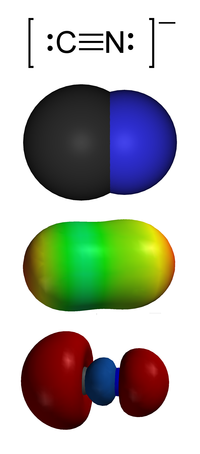
Photo from wikipedia
We investigated the effects and interactions of the organic additives Polyquaternium-2 (PUB) and 1-benzyl pyridinium-3-carboxylate (BPC) in alkaline non-cyanide zinc electroplating. As PUB and BPC were added, the cathode potential… Click to show full abstract
We investigated the effects and interactions of the organic additives Polyquaternium-2 (PUB) and 1-benzyl pyridinium-3-carboxylate (BPC) in alkaline non-cyanide zinc electroplating. As PUB and BPC were added, the cathode potential of the polarization curve shifted in the negative direction at the same current density that occurred in the electrochemical experiment, and as confirmed by a scanning electron microscopy, the particles on the plating surface in the zinc deposits became finer, and the grain size decreased. Moreover, strong (101) and (002) peaks appeared in the X-ray diffraction pattern when no additive was added. However, as PUB and BPC were added, the intensity of the two peaks decreased, and an increase in the intensity of the (100) peak changed to a crystallographic orientation. With the addition of PUB and BPC, the gloss and whiteness gradually increased, and the surface roughness decreased. Finally, the throwing power tended to increase as PUB and BPC were added.
Journal Title: Coatings
Year Published: 2023
Link to full text (if available)
Share on Social Media: Sign Up to like & get
recommendations!